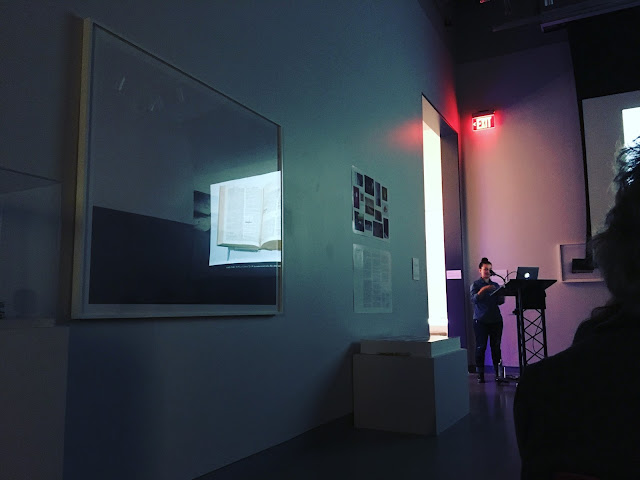 |
| Figure 1: "Don't You Think That's Elitist", 48x72x2 inches, chalk and charcoal on chalkboard, 2010. |
After the White Noise series, Collins moved into assessing language as it relates to race and systems of oppression. She starts by explaining the idea that as we understand the world, our use of language shifts, therefore language is fluid. Collins collected old dictionaries and encyclopedias to find poetry in the language, and found that often times words will have two different meanings that starkly contrast one another. For example, the word "ravel" has two different definitions; to complicate or to make very simple. How is this possible?
Collins then shredded the pages of dictionaries with these contradicting words, and made them into piles. One example of this work is Bound (see fig. 2) which Collins explained "contains the essence of the language, but changed in form holding onto the residue".
 |
| Bound, 1968. Dimensions variable, American Masters paper and Pink Pearl eraser, 2015. |
Another connection Collins made while spending so much time analyzing the English language is that examples used in the definitions of words are often related to either violence or the criminal justice system. While Collins couldn't articulate a reason for this occurrence, she wanted it noted.
Overall, Bethany Collins was a very inspiring speaker. She was able to articulate her work very effectively, naming each step in the process for why she creates the work she does. Her rationale was easy to understand, and her perspective as a female black artist shown brilliantly through her work.

No comments:
Post a Comment